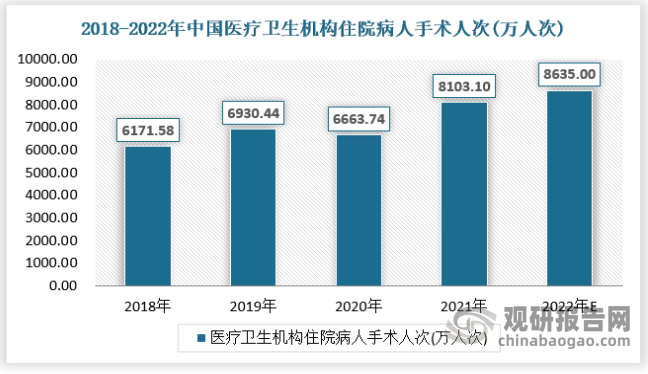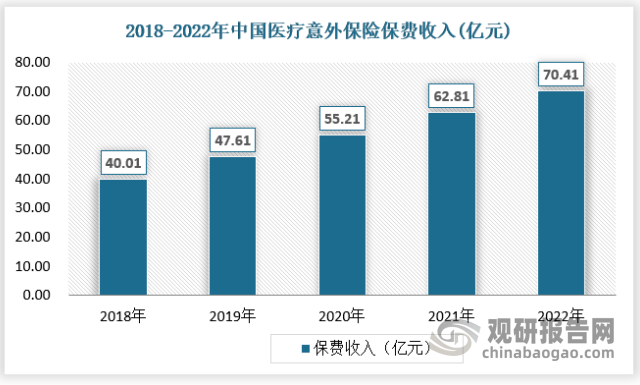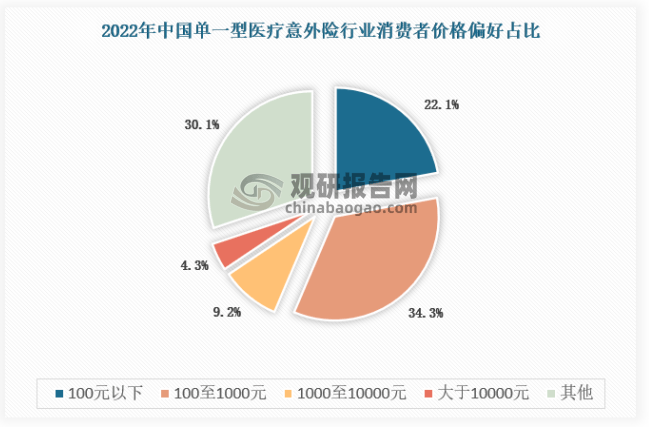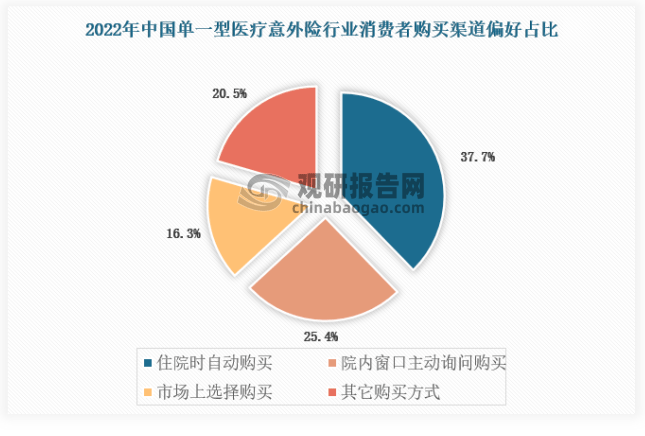I. Industry Overview
Single-type medical accident insurance is a type of medical accident insurance, mainly focusing on high-risk surgeries and disease treatments. Medical accident insurance mainly covers the reasonable and necessary medical expenses incurred by the insured due to accidental incidents specified in the insurance contract during the insurance period. The insurance company will assume the corresponding insurance payment liability within the agreed scope of coverage and insured amount in accordance with the insurance contract. Generally, accident medical insurance exists as an additional insurance to accident insurance.
II. Market Development Status of the Industry
According to the "Report on In-depth Research on the Current Situation and Development Prospect of China's Single-type Medical Accident Insurance Industry (2024-2031)" released by Guanyan Report Network, with the increasing number of medical disputes in recent years, the pressure on medical staff in their practice has also increased. When medical institutions face huge compensation for medical disputes, improving the medical risk-sharing mechanism and developing medical accident insurance have become an inevitable trend. Compared with letting medical institutions bear medical risks on their own, the medical accident insurance system has more advantages in diversifying losses caused by medical risks. It not only reduces the pressure on doctors' careers and medical institutions but also better protects the rights and interests of patients.
Since 2003, a hospital in Beijing has joined hands with an insurance company to pilot surgical accident insurance. The insured projects mainly include high-risk surgical items commonly performed in 9 departments such as cardiothoracic surgery, craniocerebral surgery, and obstetrics and gynecology. Regarding premiums and insured amounts: premiums of 900 yuan, 1,200 yuan, and 1,500 yuan correspond to insured amounts of 30,000 yuan, 40,000 yuan, and 50,000 yuan respectively. For premium payment: patients and the hospital share the cost in proportion. For example, for a 1,200-yuan surgical accident insurance, the patient pays 1,180 yuan, and the hospital pays 20 yuan. Taking cardiovascular interventional diagnosis and treatment surgeries in this hospital as an example, the proportion of patients in this department who have purchased surgical accident insurance has now reached nearly 90%, achieving remarkable results in resolving medical disputes and harmonizing doctor-patient relationships.
With the continuous increase in the number of inpatients undergoing surgeries in China, the demand for surgical and anesthesia accident insurance has grown, indicating a large development market. Data shows that the number of inpatients undergoing surgeries in China increased from 61.7158 million in 2008 to 81.0310 million in 2021. It is estimated that the number will further reach 86.35 million in 2022, as detailed below:

Source: China Health Statistics Yearbook, compiled by Guanyan Tianxia Data Center
Each sub-type of medical accident insurance plays an important positive role in reducing the risks of insured persons and reducing doctor-patient disputes, but the current promotion level in China is relatively low. In the future, as the promotion of various sub-types is gradually strengthened, the medical accident insurance industry will continue to develop well, with the market penetration rate increasing. By 2022, the premium income of China's medical accident insurance industry was approximately 7.041 billion yuan.

III. Analysis of Consumer Market Characteristics
1.Price Preference
A survey on patients' expectations for the premium of single-type medical accident insurance found that 56.3% of patients believed that a premium below 1,000 yuan was appropriate, and 30.1% of patients chose other options (premium calculation based on the risk of medical behaviors).

2.Claim Preference
A survey on patients' expectations for claims of single-type medical accident insurance found that 56.2% of patients hoped that insurance institutions could actively track claims during the claim process, and 34.6% of patients were willing to file claims independently. In the product design of single-type medical accident insurance, insurance institutions can provide differentiated insurance products to meet patients' needs for active claim tracking.

3.Preference for Purchase Channels
A survey on patients' preferred purchase methods for single-type medical accident insurance found that 37.7% of patients chose to purchase it automatically during hospitalization, 25.4% of patients chose to purchase it after actively inquiring at in-hospital windows, and 16.3% of patients chose to purchase single-type medical accident insurance products in the market.

Source: Compiled by Guanyan Tianxia Data Center
Therefore, it can be seen that although medical staff in medical institutions have a certain understanding of single-type medical accident insurance, there is still much room for improvement in the training of medical accident insurance in medical institutions. Medical institutions should strengthen the construction of medical risk prevention systems and further ensure that relevant medical staff receive clinical promotion and training on single-type medical accident insurance. (WWTQ)
